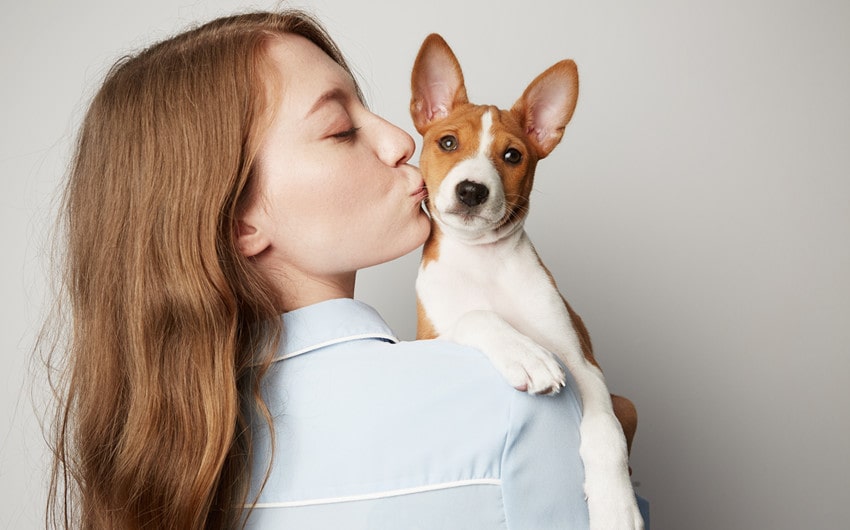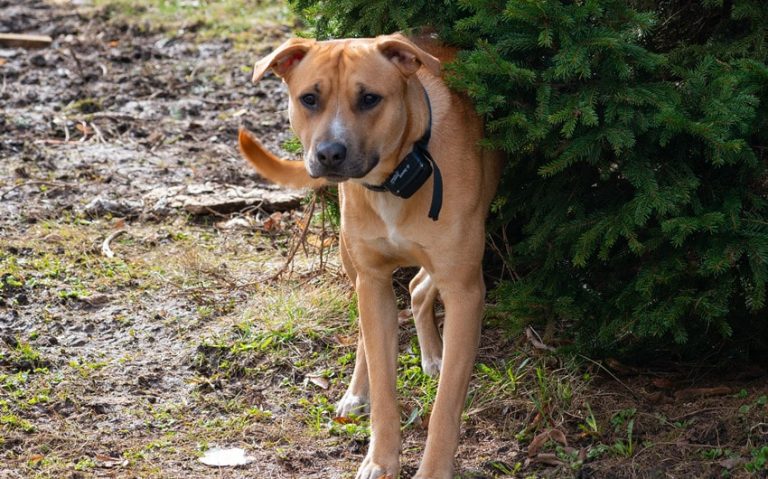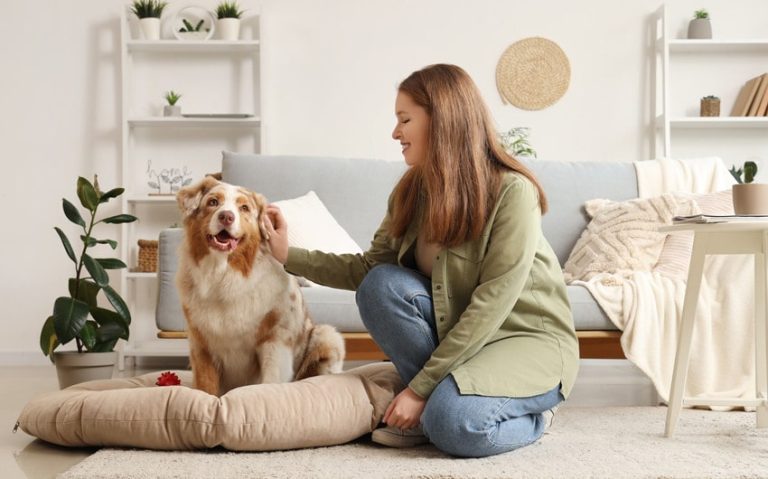Have you ever wondered, “Do dogs understand kisses?” This question piques the curiosity of many dog lovers who shower their furry friends with kisses, hoping to express their deep affection. Our exploration seeks to uncover if our four-legged companions grasp the significance of this human gesture of love.
The Science Behind Affection in Dogs

Dogs, through centuries of domestication, have become intricately connected to humans, not just as companions but as beings capable of sharing emotional bonds. The science delving into canine emotions offers fascinating insights into how dogs perceive and return affection.
At the heart of this emotional exchange is the hormone oxytocin, often dubbed the “love hormone,” which plays a crucial role in bonding and attachment in both humans and dogs. When dogs and their owners share a loving gaze or engage in affectionate interactions, oxytocin levels surge in both, mirroring the hormonal response found in close human relationships.
Neuroscientific research has further illuminated the capacity of dogs to experience emotions similar to humans. Brain imaging studies reveal that the caudate nucleus, an area associated with positive expectations and love, is activated in dogs upon smelling their owners or receiving positive attention.
This suggests that dogs don’t just seek affection for its immediate rewards (like treats or play) but value the emotional connection itself, experiencing a form of love that is not entirely dissimilar to human feelings. This is why dogs are the first choice for most people when it comes to getting an emotional support animal.
Moreover, the way dogs have been selectively bred and socialized to live with humans has enhanced their ability to read and interpret human gestures and facial expressions. They are adept at picking up subtle cues and can differentiate between positive and negative emotions in their owners. This sensitivity allows them to respond appropriately to human affection, whether through a gentle touch, a warm embrace, or indeed, a kiss.
Do Dogs Understand Kisses?
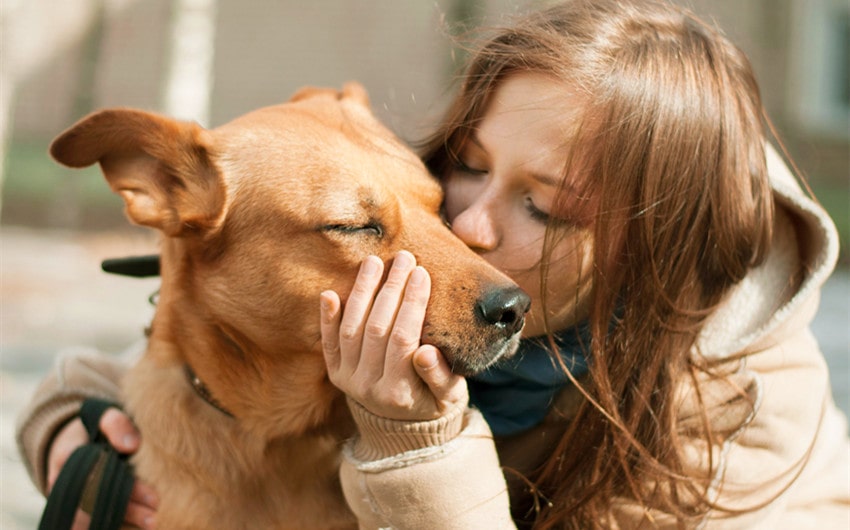
When considering if dogs understand kisses, it’s essential to bridge the gap between human and canine languages of love. While the act of kissing is purely human, dogs learn to interpret and respond to it through the lens of their sensory experiences and social learning.
A dog might initially be puzzled by a kiss, but through positive reinforcement and repetition, it can come to recognize it as a loving gesture. This learning process is akin to how they learn commands or tricks — through association and positive outcomes.
Dogs are highly observant and sensitive to their owners’ emotions and intentions. When a kiss is accompanied by a soft tone of voice, gentle handling, or even treats, dogs begin to associate this human gesture with affection and security. The positive feedback they receive — be it in the form of physical closeness, verbal praise, or a treat — reinforces their understanding that kisses are positive interactions.
However, individual dogs may perceive and react to kisses differently. Some might revel in the closeness and seek more, showing their contentment through wagging tails, leaning in, or offering kisses in return. Others might tolerate kisses without much visible enthusiasm, and a few may find the invasion of personal space uncomfortable, stepping back or turning away.
These varied reactions underline the importance of observing and respecting each dog’s personal boundaries and preferences. For dogs to truly appreciate kisses, they must feel safe and loved, understanding that this human expression of affection is another form of the care and adoration they receive from their owners.
However, it’s crucial to approach kissing with awareness and sensitivity to your dog’s comfort and personal space. From a dog’s perspective, having a human’s face come too close can be intimidating and may provoke a defensive reaction, such as biting, especially if the dog feels threatened or uncomfortable. This potential for misunderstanding underscores the importance of reading your dog’s body language and signals before proceeding with such close physical contact.
Always ensure your dog is relaxed and receptive to your proximity before attempting to kiss them. It’s better to err on the side of caution and gradually build up to closer interactions based on your dog’s responses and comfort level.
In conclusion, while the concept of a kiss does not naturally exist in the canine world, dogs are capable of learning to associate it with affection through the context in which it is given. The understanding and appreciation of a kiss, then, are not inherent but are cultivated through the loving relationship between a dog and its owner, underscored by mutual trust, respect, and the universal language of love that transcends species boundaries.
Teaching Your Dog to Appreciate Kisses
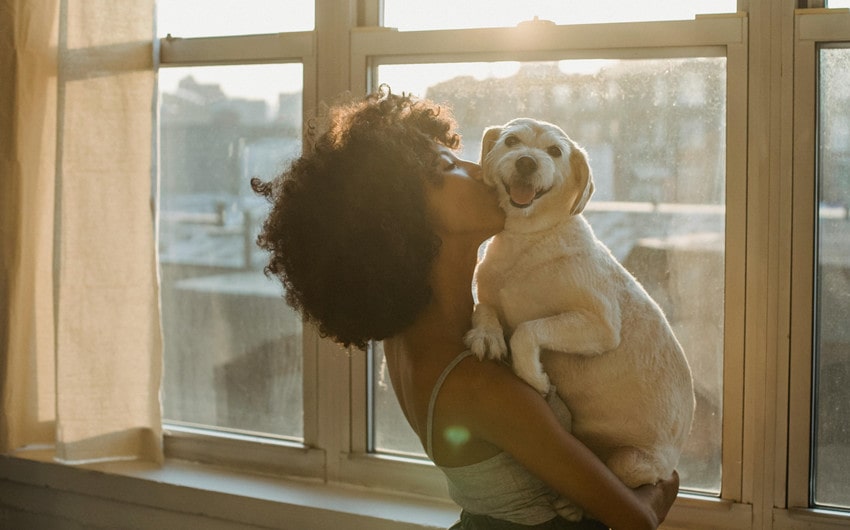
Teaching your dog to appreciate kisses involves a delicate balance of patience, understanding, and positive reinforcement. The journey begins with recognizing your dog’s current comfort level with physical closeness and gradually building from there. It’s crucial to start with a foundation of trust and mutual respect, ensuring your dog feels safe and secure in your presence.
1. Start Slowly
Begin by getting your dog accustomed to being close to your face without directly kissing them. You can sit with your dog and gently stroke them, slowly bringing your face closer to theirs during these calm moments. The goal is to make them comfortable with the proximity of your face to theirs without any direct contact initially.
2. Associate Kisses with Positive Experiences
Once your dog is comfortable with your face being close, you can introduce gentle kisses. Pair each kiss with something your dog loves, such as their favorite treat or a session of petting. This association helps your dog understand that kisses are a positive interaction, leading to pleasant experiences.
3. Caution with Close Proximity
It’s important to acknowledge that from a dog’s perspective, a human face coming too close can be intimidating and may trigger a defensive response, including biting. This reaction is more about the dog’s personal space and comfort with close interactions than about aggression.
Always proceed with caution and respect your dog’s signals. If at any point your dog seems uncomfortable with the proximity of your face, it’s vital to back off and give them space. This respect for their boundaries helps build trust and ensures safety.
4. Respect Your Dog’s Space
It’s essential to closely observe your dog’s reactions to your kisses. If they seem uncomfortable or retreat, it’s important to respect their space and not force the interaction. Some dogs may need more time to adjust, while others may prefer different forms of affection.
5. Consistency and Patience
Like any form of training, teaching your dog to appreciate kisses requires consistency and patience. Repeating this positive association over time will help your dog understand that kisses are an expression of love and affection from you.
6. Recognition and Reward
When your dog begins to show signs of enjoying or at least being comfortable with kisses, such as wagging their tail, leaning in, or showing relaxed body language, make sure to recognize and reward this acceptance with verbal praise or a treat. This reinforcement helps solidify the positive connection with kisses.
Alternative Ways to Show Affection to Dogs
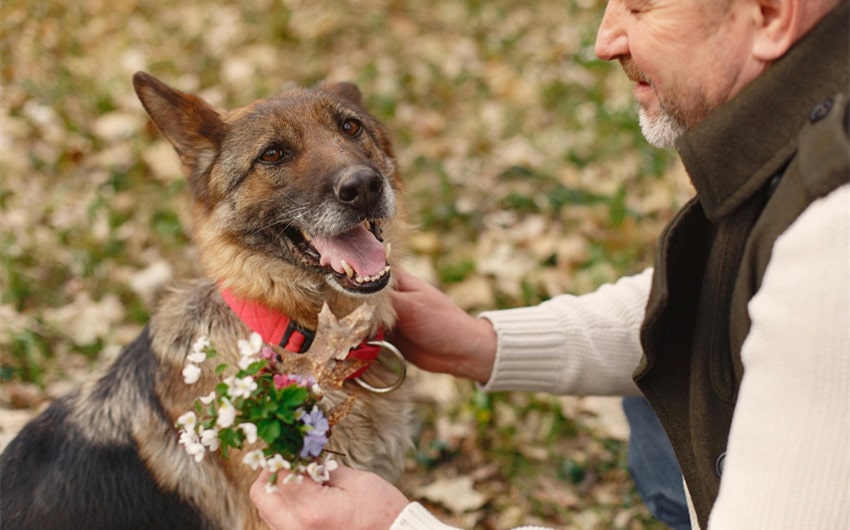
While kisses are a common way for humans to express love, there are numerous other methods to show affection to your dog that may be more aligned with their natural preferences and communication style.
- Quality Time Together: Spending quality time with your dog, whether it’s going for walks, playing fetch, or simply sitting together quietly, can strengthen your bond. Dogs value the presence and attention of their owners highly.
- Physical Touch: Gentle petting, belly rubs, or a soothing massage can be very comforting to dogs. Pay attention to the areas your dog enjoys being touched the most and focus on those spots to convey your affection.
- Verbal Praise: Dogs are very responsive to the tone of our voice. Speaking to them in a soft, affectionate tone can communicate your love and appreciation effectively, even without physical contact.
- Interactive Play: Engaging in playtime with toys, puzzles, or simple games like hide and seek can be a fun and effective way to show your affection. Play fosters a sense of companionship and mutual enjoyment.
- Training and Learning: Dogs enjoy learning new things, and training sessions can be a great way to spend quality time together. Using positive reinforcement methods during training not only teaches your dog new skills but also reinforces your bond through shared achievements.
- Treats and Special Foods: Offering your dog a special treat or preparing a homemade meal can be a gesture of love. However, it’s important to ensure that any treats or foods are healthy and appropriate for your dog.
Each dog is unique, with their own preferences and ways of expressing affection. By observing and respecting these preferences, owners can develop a deep, meaningful relationship with their dogs, based on mutual understanding and respect. Whether through kisses or any of these alternative methods, the most important aspect is the love and intention behind the gesture.
Conclusion
As we’ve explored the nuanced world of canine affection, it’s clear that while dogs may not inherently understand kisses as humans do, they are capable of associating them with positive emotions and affection through careful introduction and positive reinforcement.
Recognizing and respecting our furry friends’ boundaries and comfort levels is paramount in strengthening the unique bond we share with them, ensuring that our gestures of love are both safe and cherished.

